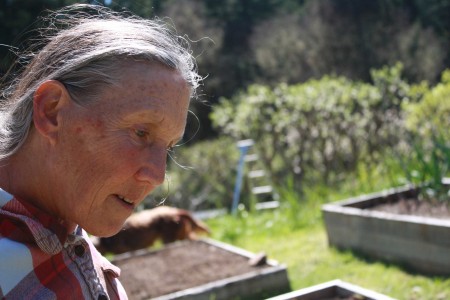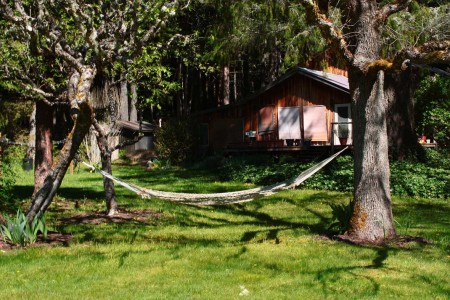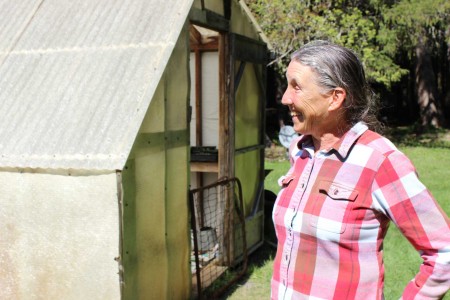"I was one of the first women to work for the Forest Service back in the early ’70s. When I first started, as a matter of fact, I was the first woman to work in the Tiller Ranger District, and so maybe some of us are just pioneers at heart and want to see change."
Chris Rusch sits at a wooden picnic table surrounded by a greenhouse full of new plant starts, a modest orchard, and beams of sunligh streaming through the giant trees scattered around her property in Tiller, Oregon. Retired after 35 years in the Forest Service where she worked as the district botanist, silviculturist, and as head of reforestation operations, she now spends time gardening and participating in community organizations and dialogues. In a recent conversation, Rusch described her long history of involvement in the issue of aerial herbicide spraying.

In the 70s there was a lot of controversy over the use of herbicides in forest management. Joining in the early talks about aerial spraying was risky as a Forest Service employee, but didn’t scare Rusch away. She wrote letters to the editor under the alias ‘Mary Green’ and began to join groups such as the Healthy Environmental Action League (HEAL) and the Northwest Center for Alternatives to Pesticides (NCAP). These groups discussed the herbicides being used, their possible effects, and alternatives to pesticide use. Rusch and her colleagues in the Forest Service stopped the use of chemicals before it was federally mandated. Together they continued to manage the three to four thousand acres of clearcuts without spray by scalping, mulching, brush cutting, and adopting a stewardship approach with local residents. “Almost like adopting an area, a clearcut area,” Rusch says, “and taking care of it for three years”.

Visible just beyond the raised beds of vegetables and rolling pastures of the Rusch property are mountains buried under countless acres of forest. Rusch points behind her to the industrial forest land that was sprayed in 1980 and resulted in chemical drift on her property. “Everything in the garden died that Spring” she recalls, and “I had flu like symptoms and skin rash problems for a year.” Being personally affected and seeing the environmental damage caused Rusch to rethink the way unwanted vegetation was being dealt with. “So the whole chemical herbicide thing was way out of line with my philosophy of life… I think that’s probably what did it,” she said, recalling that she reached a “ point in life when I said, ‘boy we just gotta ban together and stop this.’” Her personal experience as well as her professional background, as one of the first women to work in the Forest Service in Oregon, give her a unique perspective on how to move forward with this issue.

To start, Rusch advocates for spreading awareness as many Oregonians do not know about the effects of herbicides. “This is something people need to know is happening and this is what’s spraying out of the helicopters,” Rusch says. our goal is to bring it to everybody’s attention.” Along with community education about alternative forest management strategies, she also believes in compromises with the timber industry and ‘baby steps.’ “I mean after all, the states surrounding us have stricter rules on buffer zones than Oregon does and so if they can do it why can’t the timber industry in Oregon do it too?” Rusch managed to do successful reforestation work on thousands of acres for 20 years without herbicides.


